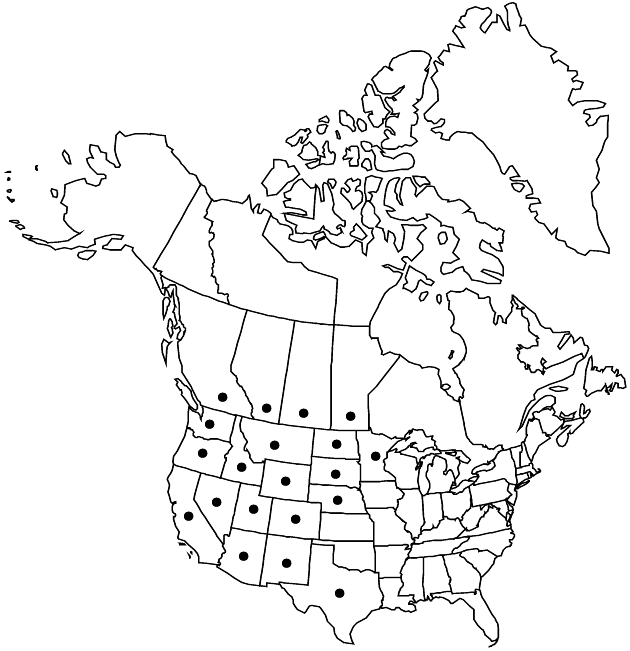Crepis runcinata
Fl. N. Amer. 2: 487. 1843.
Perennials, 15–65 cm (taproots relatively long, caudices swollen). Stems 1–3, erect or ascending, scapiform, branched near middles, glabrous or hispid, sometimes stipitate-glandular distally. Leaves mostly basal (rosettes); petiolate; blades elliptic, lanceolate, linear, oblanceolate, obovate, or spatulate, 3–30 × 0.5–8 cm (bases attenuate) margins usually entire or weakly dentate, sometimes serrate, dentate, or pinnately lobed, apices rounded, faces glabrous or hispid to hispidulous (sometimes glaucous). Heads (1–)3–15(–30), borne singly or in ± corymbiform arrays. Calyculi of 5–12, narrowly triangular, glabrous or tomentulose bractlets 1–3 mm. Involucres turbinate-campanulate, 7–21 × 8–12 mm. Phyllaries 10–16, lanceolate or oblong, 8–10 mm, (bases keeled and thickened, margins scarious) apices usually acute, sometimes attenuate or obtuse (often ciliate-tufted), abaxial faces glabrous or tomentulose, sometimes stipitate-glandular, adaxial glabrous. Florets 20–50; corollas golden yellow, 9–18 mm. Cypselae dark to golden reddish or yellowish brown, fusiform, 3.5–8 mm, tapered distally or beaked, ribs 10–13 (strong); pappi white, 4–9 mm.
Distribution

Alta., B.C., Man., Sask., Ariz., Calif., Colo., Idaho, Minn., Mont., N.Dak., N.Mex., Nebr., Nev., Oreg., S.Dak., Tex., Utah, Wash., Wyo., n Mexico.
Discussion
Subspecies 7 (7 in the flora).
Crepis runcinata is recognized by its basal rosettes of weakly dentate or almost entire leaves, scapiform stems, branching near middles, and reduced cauline leaves. The stems and leaves are usually glabrous. Multiple subspecies were described by E. B. Babcock (1947); the variation is continuous. Babcock suggested that this is the only American species that shows a relationship to Asian species.
Selected References
None.
Lower Taxa
Key
| 1 | Phyllaries eglandular | > 2 |
| 1 | Phyllaries usually stipitate-glandular or finely glandular-hispid | > 3 |
| 2 | Leaves obovate, oblanceolate, or spatulate, 1.5–4 cm wide | Crepis runcinata subsp. glauca |
| 2 | Leaves narrowly oblanceolate or linear, 0.5–2 cm wide | Crepis runcinata subsp. barberi |
| 3 | Teeth of leaves prominently white-tipped; phyllaries broadly lanceolate or oblong (California, Nevada, Oregon) | > 4 |
| 3 | Teeth of leaves not prominently white-tipped (or only minutely so); phyllaries lanceolate | > 5 |
| 4 | Involucres 19–21 mm; phyllaries broadly lanceolate, apices long-acuminate; cypselae ± distinctly beaked | Crepis runcinata subsp. andersonii |
| 4 | Involucres 10–13 mm; phyllaries oblong, apices obtuse or acute; cypselae not beaked | Crepis runcinata subsp. imbricata |
| 5 | Leaves coarsely dentate or pinnately lobed (glaucous) | Crepis runcinata subsp. hallii |
| 5 | Leaves remotely toothed or serrate, or pinnately lobed, or entire | > 6 |
| 6 | Leaves 0.5–3.5 cm wide | Crepis runcinata subsp. runcinata |
| 6 | Leaves 2.5–8 cm wide | Crepis runcinata subsp. hispidulosa |
